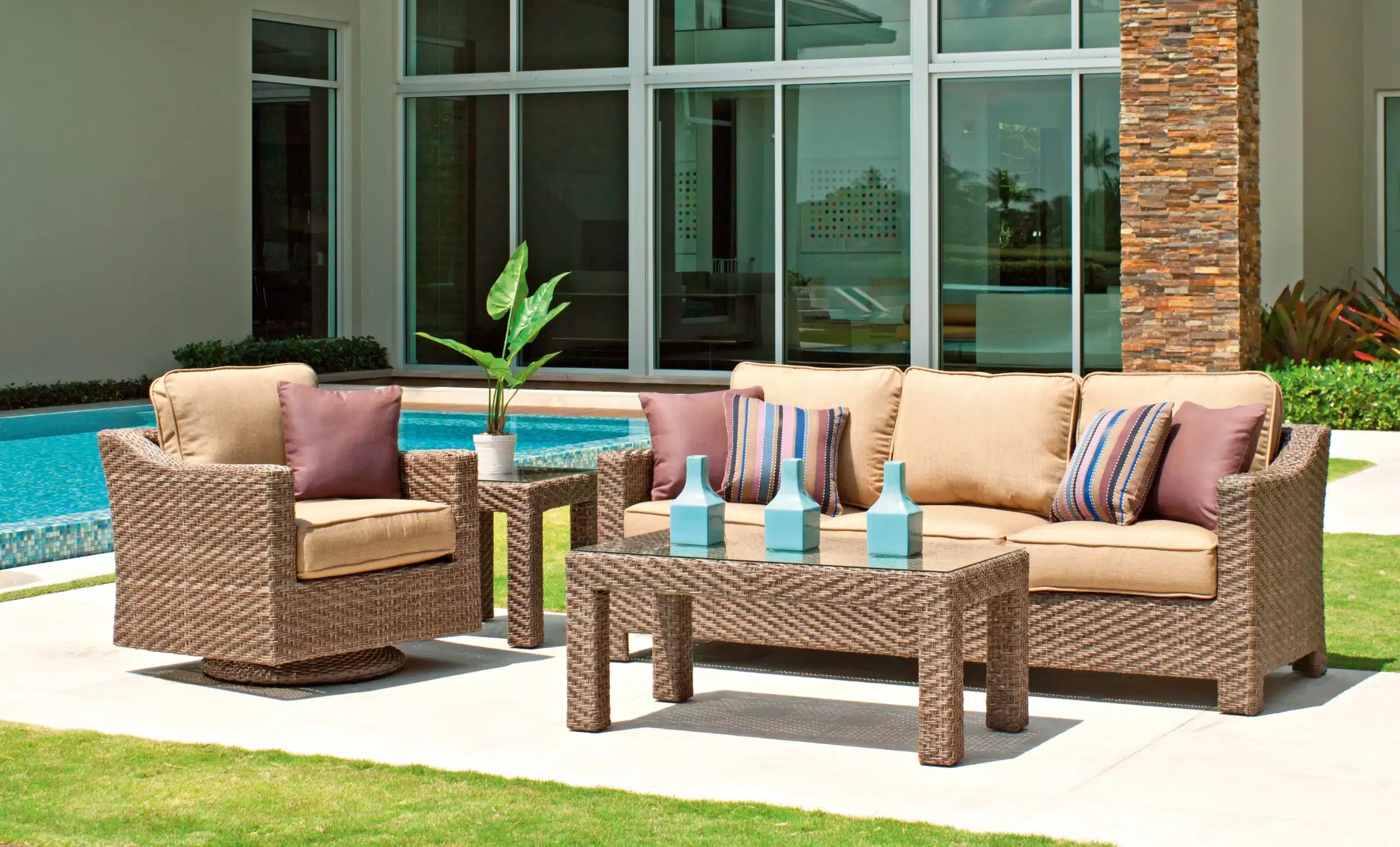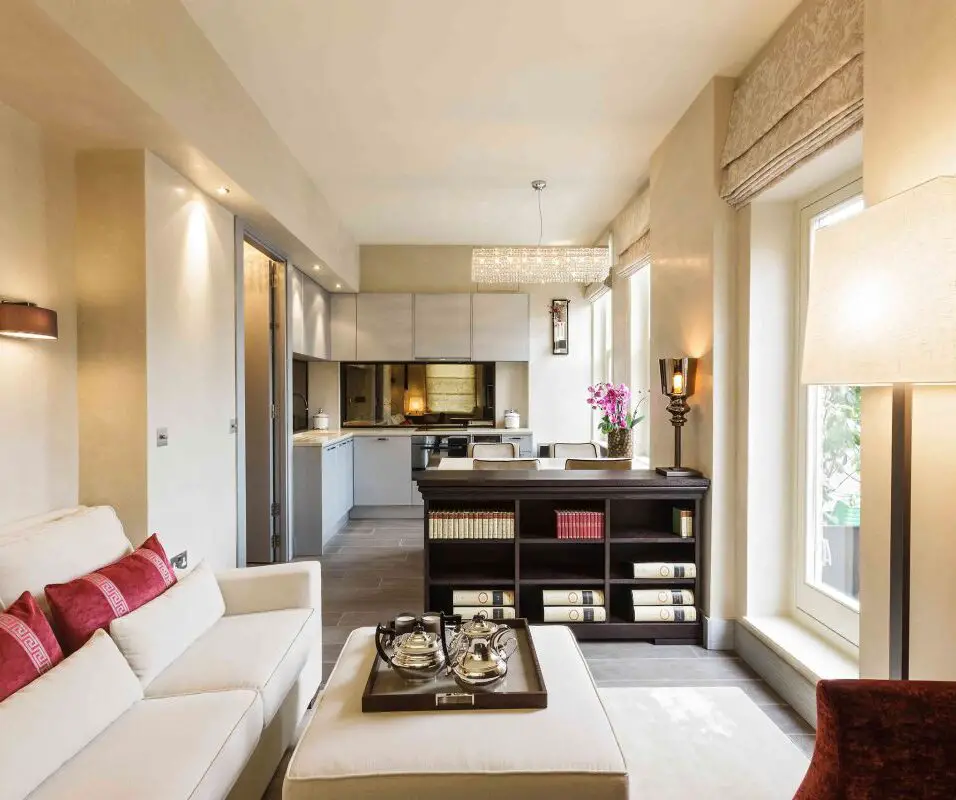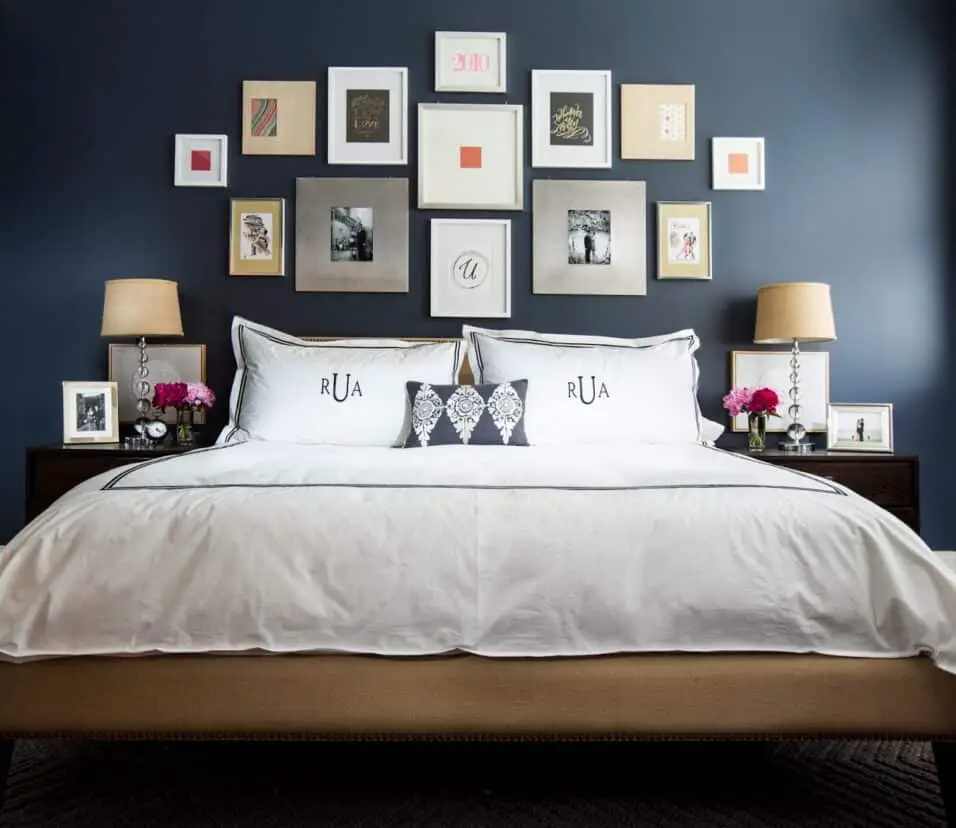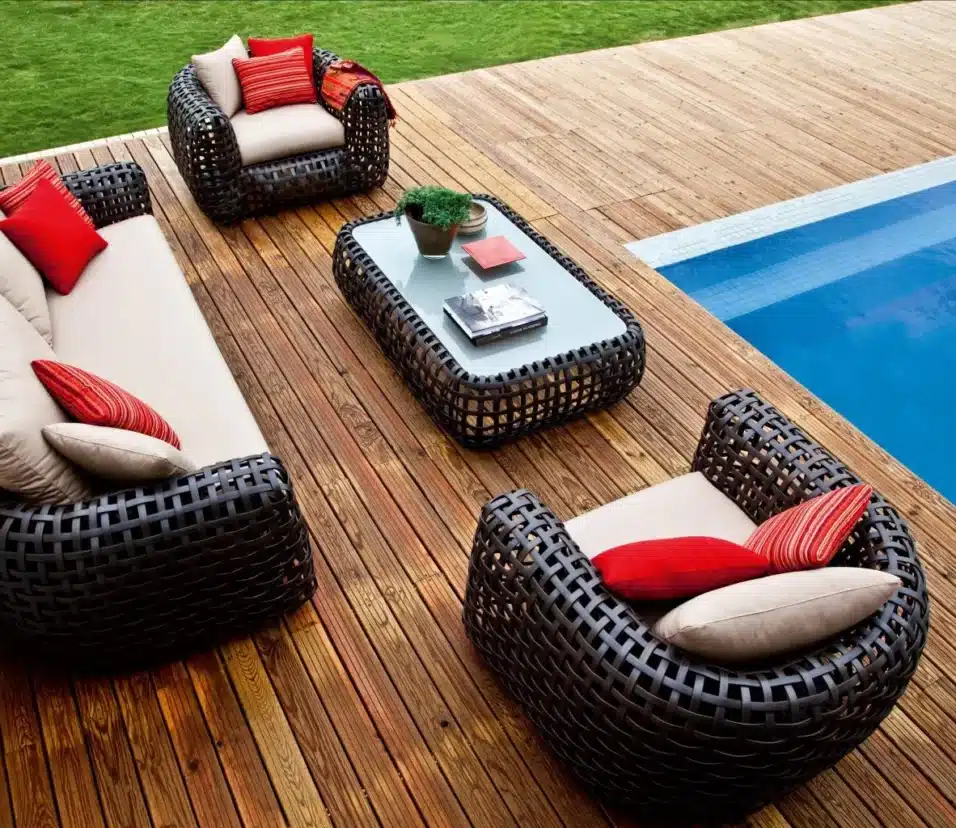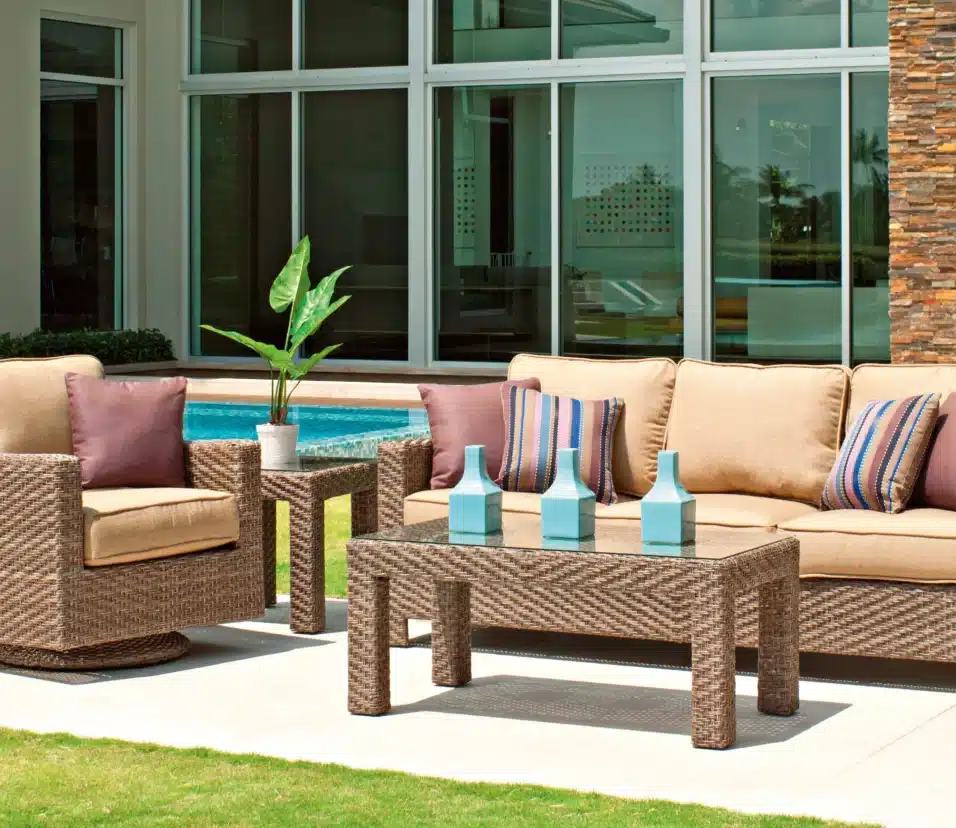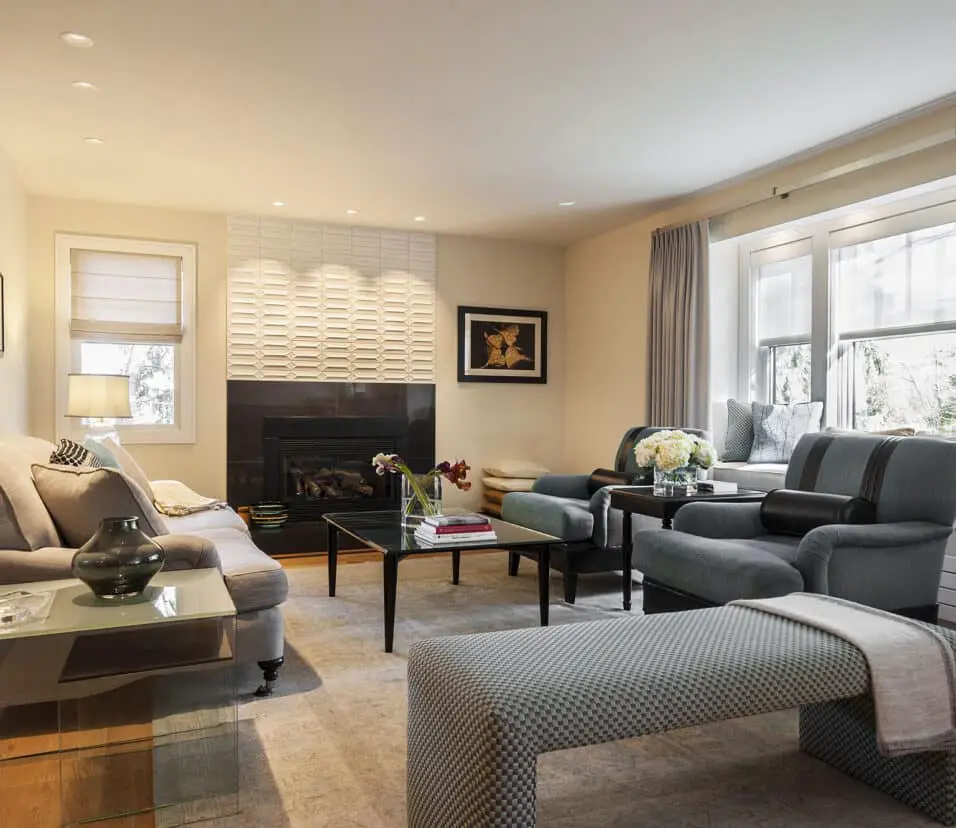How To Arrange Outdoor Furniture
Introduction
How To Arrange Outdoor Furniture: The world of outdoor living, where the beauty of nature blends seamlessly with the comfort of well-arranged outdoor furniture. Whether you have a sprawling garden, a cozy balcony, or a charming patio, creating a stylish and functional outdoor space can greatly enhance your living experience and provide a serene retreat to unwind and entertain. If you have a large outdoor area, consider dividing it into distinct zones to cater to various activities.
Arranging outdoor furniture is an art that combines aesthetics, functionality, and the natural surroundings to create an inviting and harmonious atmosphere. From selecting the right furniture pieces to optimizing the layout for maximum comfort and flow, each decision plays a crucial role in transforming your outdoor area into an oasis of relaxation and social gatherings. For example, designate a space for lounging with comfortable sofas and chairs, a dining area corner fireplace with a table and chairs, and a cozy corner with a fire pit for chilly evenings.
Whether you are a seasoned design enthusiast or a novice looking to create an outdoor haven, our comprehensive tips and insights will inspire you to make the most of your open-air space, allowing you to savor the beauty of the outdoors while enjoying the comforts of home. Before diving into the design, consider how you intend to use the outdoor space. Will it primarily be a relaxation spot for reading and lounging, a dining area for delightful al fresco meals, or a lively setting for gatherings with family and friends? Understanding the purpose will help you choose the right furniture pieces and layout.
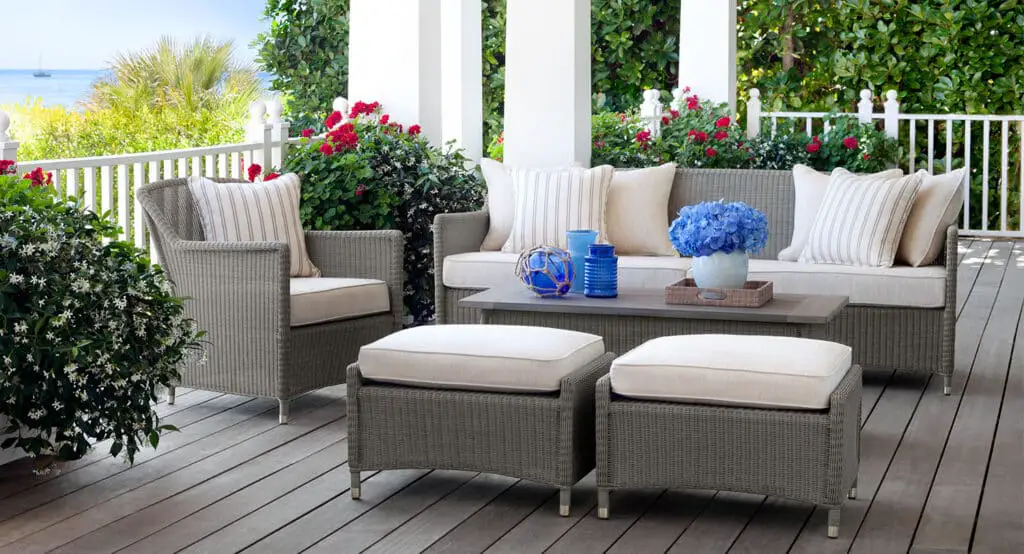
How to arrange furniture on an outdoor deck?
8 Rules of Thumb for Arranging Patio Furniture
- Decide on a Focal Point.
- Find a Purpose for Your Patio.
- Design Like a Traffic Conductor.
- Placement of Outdoor Furniture.
- Make if Feel Like You’re at Home.
- Separate the Outdoor Kitchen.
- Divide and Conquer.
- Accessorize and Organize!
Before diving into the arrangement process, take a close look at your deck’s layout and dimensions. Measure the area to understand the available space and any potential restrictions. Note any architectural features, such as posts or railings, that might affect the placement of furniture. By understanding the deck’s characteristics, you can better visualize the possibilities for creating an ideal outdoor setting.
Consider the primary function of your outdoor deck. Will it be a place for leisurely lounging, outdoor dining, or a combination of both? Define the different zones you want to incorporate and arrange the furniture accordingly. Dividing the deck into distinct areas can create a more organized and visually appealing space.
Choose furniture pieces that are designed to withstand outdoor elements. Opt for materials like teak, wicker, aluminum, or weather-resistant fabrics. Comfort should be a priority, so invest in plush cushions and seating options that encourage relaxation. Folding or stackable furniture is excellent for versatility and easy storage when not in use.
Ensure that there is enough space for comfortable movement around the deck. Avoid placing furniture in a way that obstructs pathways or creates cramped areas. A clear and open traffic flow will enhance the functionality and accessibility of the outdoor space.
Identify focal points on your deck, such as a stunning view, a captivating garden, or an eye-catching water feature. Orient your furniture to highlight and take advantage of these natural attractions, allowing you and your guests to enjoy the beauty of your surroundings.
Arrange seating in cozy and conversational groupings. Consider positioning chairs and sofas facing each other to foster an inviting and intimate atmosphere. Add side tables within reach to hold drinks, books, or small decorative elements.
What is the best way to store outdoor furniture?
Stack it Right
To save space, you can stack your patio furniture. This is especially useful when storing your furniture in a small area, like a shed or a garage. Also loosely stack cushions in a dry area off the floor for the winter. And if storing in a shed outdoors, consider covering your cushions with a cloth tarp.
Before storing your outdoor furniture, give it a thorough cleaning to remove dirt, debris, and any lingering moisture. Use a mild detergent, warm water, and a soft brush to scrub away stains from surfaces. For fabric cushions, check the manufacturer’s guidelines and use appropriate cleaning methods. Ensure that all pieces are completely dry before proceeding with storage.
Selecting the right storage location is essential in preserving the condition of your outdoor furniture. If possible, store furniture in a dry, cool, and well-ventilated area. An indoor storage space, such as a garage, basement, or shed, is ideal for providing protection from extreme weather conditions and direct sunlight.
If indoor storage is not available, consider investing in weatherproof furniture covers designed specifically for your furniture’s dimensions and shapes. These covers offer protection from the elements, including rain, snow, and harmful UV rays. Make sure the covers are secure and fit snugly to prevent water or debris from accumulating underneath.
If your furniture is collapsible or stackable, disassemble it to save space and minimize the risk of damage. Remove cushions and fabric components and store them separately in a dry and clean area. Stack chairs and tables carefully to prevent scratching or denting. Use soft padding or cloth between stacked pieces to provide extra protection.
Avoid storing furniture directly on the floor to prevent potential water damage. Use pallets, wooden blocks, or furniture risers to elevate your items, allowing air to circulate freely and reducing the risk of mold or mildew growth.
How should the furniture be arranged?
Set up seating around the fireplace or another focal point of the room so it’s visually balanced.
- In a large living room with lots of windows, arrange furniture front and center.
- Seating arrangements should face each other, no more than 8 feet apart, encouraging conversation.
- Anchor the seating with a large area rug.
Identify a natural focal point in the room, such as a fireplace, large window, or a striking piece of artwork. Arrange the furniture around this focal point to draw attention and create a sense of visual harmony. The focal point will also serve as an anchor for the rest of the furniture arrangement.
In rooms intended for socializing or relaxation, such as living rooms, create a conversation area by arranging seating in a manner that allows for easy interaction. Position sofas and chairs facing each other, forming a cozy and inviting space for conversations and gatherings.
Consider the flow of movement within the room and ensure there is enough space for people to walk comfortably without obstacles. Avoid placing furniture in high-traffic areas or blocking pathways. A clear and unobstructed traffic flow contributes to the functionality and safety of the room.
Achieve visual balance in the room by distributing furniture and decor evenly. For example, if you have a large sofa on one side, balance it with an equally substantial piece or a grouping of furniture on the opposite side. Symmetry in furniture arrangement imparts a sense of order and elegance.
Don’t be afraid to experiment with different furniture arrangements to find the most appealing and functional layout. Move pieces around until you achieve the desired look and feel. Utilize area rugs to define separate zones and anchor furniture groupings.
Can I leave outdoor furniture outside?
While aluminum, plastic, concrete and teak materials are ideal for outdoor furniture year-round, materials like iron, steel and wicker can be damaged by wet and cold weather conditions and should not be left outside in the winter.
Different types of outdoor furniture have varying degrees of weather resistance. Some materials, like teak, aluminum, and all-weather wicker, are naturally more durable and can withstand outdoor exposure better than others. Plastic and resin furniture are also designed to withstand the elements. On the other hand, certain materials like wood, wrought iron, and certain fabrics may require more protection and maintenance.
The climate in your area plays a significant role in determining whether you can leave outdoor furniture outside. If you live in a region with mild and dry weather throughout the year, outdoor furniture may fare better when left outside. However, in areas with harsh weather conditions, such as extreme heat, cold, rain, snow, or high humidity, prolonged exposure to the elements can lead to accelerated wear and damage.
Proper maintenance and protection are essential for preserving the longevity of outdoor furniture. Regular cleaning, applying protective coatings, and using weatherproof furniture covers when not in use can significantly extend the life of your outdoor furniture. It’s important to check the manufacturer’s guidelines for maintenance recommendations specific to your furniture’s materials.
While some outdoor furniture is designed to withstand year-round exposure, others may benefit from being stored or protected during harsh seasons. For instance, during the winter, it is generally advisable to store more delicate furniture or cushions indoors or in a protected area to prevent damage from freezing temperatures and moisture.
What are the four rules in furniture arrangement?
5 rules for arranging your furniture
- Develop a focal point. Every room deserves a focal point that emphasizes the style and character of the space.
- Keep traffic flow in mind.
- Don’t be afraid to float your furniture.
- Create an atmosphere for conversation.
- Experiment.
Leaving outdoor furniture outside for extended periods can also attract debris, dirt, and pests, which may cause staining or damage to the furniture. Regular cleaning and maintenance can help mitigate these issues.
Regular cleaning is crucial for maintaining outdoor furniture. Use a mild detergent and warm water to clean surfaces. For stubborn stains or mildew, you can mix water and white vinegar in equal parts. Avoid using harsh chemicals or abrasive cleaners that could damage the furniture’s finish.
After cleaning or when furniture gets wet from rain, ensure that it is thoroughly dried. Excess moisture can lead to mold, mildew, and wood rot. Wipe down furniture with a clean, dry cloth or let it air dry under the sun.
Invest in high-quality, weatherproof furniture covers to protect your outdoor furniture when it’s not in use. Covers shield furniture from UV rays, rain, dust, and debris, preventing premature fading, rust, and damage.
For wooden furniture, applying protective coatings, such as sealers, stains, or oils, can help preserve the wood and protect it from moisture and sunlight. Follow the manufacturer’s instructions for application and reapplication.
During harsh weather conditions, such as heavy rain, snow, or high winds, consider storing more delicate furniture, like cushions or pillows, indoors or in a dry, covered area to prevent damage.
To prevent damage from sitting in pooled water or accumulating dirt, elevate furniture from the ground using furniture risers or wooden blocks.
How do you keep outdoor furniture in good condition?
5 ways to keep your patio furniture looking fresh this season
- Invest in a patio awning. Credit: Reviewed / Getty Images / KangeStudio.
- Use patio furniture covers.
- Store your patio furniture during inclement weather.
- Apply UV resistant paint to walls and floors.
- Protect and clean your patio furniture cushions.
The first rule is to consider the primary function of the room.
Understanding how the room will be used will guide your furniture arrangement decisions. For example, a living room may be intended for socializing and entertainment, a bedroom for relaxation, and a home office for productivity. Each room’s function will dictate the type and placement of furniture required to support these activities.
The second rule involves establishing a focal point in the room. A focal point is a prominent feature that draws attention and serves as the centerpiece of the space. Common focal points include fireplaces, large windows with scenic views, striking pieces of artwork, or even a TV. Arranging furniture around the focal point helps anchor the room’s design and creates a sense of visual harmony.
The third rule is to ensure good traffic flow within the room. Consider the natural paths of movement and arrange furniture in a way that allows people to move freely without obstruction. Avoid placing furniture in high-traffic areas, such as doorways or walkways, to prevent congestion and ensure ease of movement.
The fourth rule focuses on achieving balance and proportion in furniture arrangement. Visual balance is essential for creating a visually appealing and comfortable space. It involves distributing the visual weight of furniture and decor evenly throughout the room. For example, if you have a large sectional sofa on one side, you can balance it with a grouping of chairs or a substantial bookcase on the opposite side.
Proportion, on the other hand, refers to the size and scale of furniture in relation to the room’s dimensions. It’s important to choose furniture that is proportional to the room’s size to avoid overwhelming or underwhelming the space. For instance, in a small living room, choosing a compact sofa and slim-profile chairs can help maximize the space and prevent it from feeling cramped.
How do you put cushions on outdoor furniture?
Use strips of hook-and-loop tape, such as Velcro, to affix cushions and pillows to the base of outdoor seating. The material comes in a variety of colors and sizes, and those with adhesive backing are especially easy to use. Peel and stick one side to the bottom of the seat cushion and the opposite side to your chair.
Choose cushions specifically designed for outdoor use, as they are made with weather-resistant materials that can withstand exposure to the elements. Look for cushions made from durable fabrics like Sunbrella or Olefin, which are water-resistant, fade-resistant, and easy to clean.
Before placing the cushions, make sure the furniture surface is clean and free of debris. Wipe down the seating area with a damp cloth or hose it down to remove any dirt or dust. If your outdoor furniture has cushions, remove them and store them indoors during rainy weather. Even weather-resistant cushions may benefit from additional protection during heavy rainfall. It not only protects your furniture from water damage, but it will also prevent cracking and discolouring from extensive sun damage.
Choose UV-resistant covers that can protect against both harmful rays and moisture.
For chairs or loungers, start by placing the seat cushions on the seating area. Ensure that the cushions fit snugly and cover the entire seating surface. Adjust the position of the cushions to align them with the backrest if necessary.
For furniture with backrests, position the backrest cushions so they align with the back support area. Adjust the cushions to ensure they are centered and provide ample support for the back. Some backrest cushions have ties or straps that can be used to secure them to the furniture frame.
After placing all the cushions, gently fluff them to even out the filling and achieve a plump appearance. Make any necessary adjustments to ensure the cushions are symmetrical and aligned with the furniture frame.
What to do with outdoor furniture when it rains?
A cover is essential for keeping your furniture dry and ensuring that it lasts longer. It not only protects your furniture from water damage, but it will also prevent cracking and discolouring from extensive sun damage. Choose UV-resistant covers that can protect against both harmful rays and moisture.
Invest in high-quality, weatherproof furniture covers that fit snugly over your outdoor furniture. Covers protect your furniture from rain, snow, and debris, preventing damage and reducing the need for frequent cleaning. Make sure the covers are secure and waterproof to provide optimal protection.
If your outdoor furniture has cushions, remove them and store them indoors during rainy weather. Even weather-resistant cushions may benefit from additional protection during heavy rainfall. It not only protects your furniture from water damage, but it will also prevent cracking and discolouring from extensive sun damage. Choose UV-resistant covers that can protect against both harmful rays and moisture. Store cushions in a dry area to prevent moisture and mold growth.
Elevate Furniture from the Ground:
To avoid water damage, elevate your outdoor furniture slightly off the ground using furniture risers or wooden blocks. This will help prevent sitting water from soaking into the furniture legs and causing damage.
If you have the option, arrange your outdoor furniture under a covered patio, pergola, or awning. This provides a measure of protection from rain and direct sunlight, keeping your furniture in better condition for longer.
If your outdoor furniture allows, slightly tilt the chairs and tables to allow rainwater to run off rather than pooling on the surfaces. This will help prevent water damage and reduce drying time after the rain.
For wooden furniture, consider applying protective coatings, such as sealers or waterproofing oils, before the rainy season. These treatments create a barrier that repels water and shields the wood from moisture damage.

Conclusion
Arranging outdoor furniture is a delightful endeavor that allows you to transform your outdoor space into a sanctuary of comfort and style. By blending the beauty of nature with carefully curated furniture and thoughtful design, you can create an oasis that reflects your personality and serves as a haven for relaxation and social gatherings. By paying attention to proportions and scale, curating comfortable seating options, and choosing furniture pieces that harmonize with your space, you can create a visually appealing and inviting environment that beckons you and your guests to linger and savor every moment.
Throughout this guide, we have explored the essential principles of outdoor furniture arrangement. From defining the purpose of your space to choosing durable and weather-resistant materials, creating distinct zones, and embracing the natural flow, each step plays a vital role in crafting an inviting and functional outdoor area.
Remember, the key to successful outdoor furniture arrangement lies in finding the perfect balance between aesthetics and functionality. Let your creativity soar as you incorporate greenery, accessories, and shelter solutions, ensuring your outdoor space is a seamless extension of your indoor living. As the seasons change, don’t be afraid to adapt and modify your outdoor setup to suit different occasions and weather conditions. Flexibility and adaptability are essential, allowing you to make the most of your outdoor area all year round.



